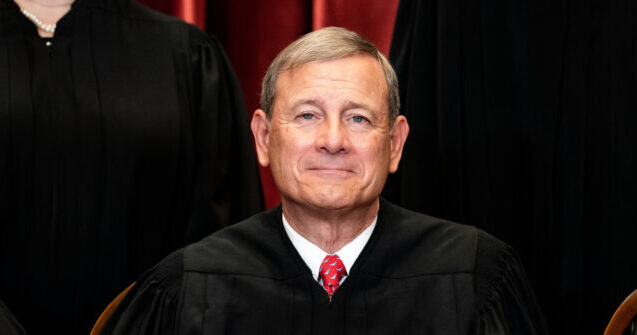The Supreme Court on Monday allowed President Donald Trump to remove a Democratic member of the Federal Trade Commission, delivering a significant victory for the administration in a case that tests long-standing limits on presidential control over independent regulatory agencies.
Chief Justice John Roberts issued a brief order blocking a lower-court ruling that had reinstated Commissioner Rebecca Kelly Slaughter while her legal challenge proceeded. While the order didn’t resolve the broader constitutional question of whether presidents can dismiss FTC commissioners without cause, it hints that the justices may uphold the administration’s position when they eventually rule on the merits.
The dispute began in March when Trump dismissed both Slaughter and fellow Democratic commissioner Alvaro Bedoya. Bedoya subsequently dropped his legal challenge, leaving Slaughter to fight the removal in federal court. Although the FTC website continues to list her as serving, her legal status has remained in limbo as the case wound through the federal judiciary, with both a district judge and the U.S. Court of Appeals for the D.C. Circuit ruling in her favor earlier this year.
At the heart of the case lies a direct challenge to Humphrey’s Executor v. United States, the 1935 Supreme Court precedent that upheld congressional restrictions on presidential removal power. Under the FTC Act of 1914, commissioners can only be removed for “inefficiency, neglect of duty, or malfeasance in office” — not for political or policy disagreements.
In recent years, the Supreme Court has repeatedly signaled skepticism toward such protections for independent agencies. Several cases have seen the justices strike down limits on presidential removal authority, finding that similar restrictions governing the Consumer Financial Protection Bureau and the Public Company Accounting Oversight Board overstepped Congressional authority by infringing on the authority of the president over the executive branch.
In this year’s Trump v.Wilcox, the Supreme Court stayed lower court orders that would have prevented Trump from removing officials from the National Labor Relations Board and the Merit Systems Protection Board, finding the administration is likely to succeed in showing those agencies exercise considerable executive power, making for-cause limitations vulnerable to constitutional challenge.
Administration lawyers argue that the FTC’s removal restrictions unlawfully constrain the president’s Article II powers to oversee the executive branch. The Trump administration has pursued similar efforts to replace members of other independent commissions, with the Court showing increasing willingness to permit such actions.
The FTC operates under a bipartisan structure designed to insulate it from political pressure, with five commissioners serving staggered seven-year terms and no more than three members permitted from the same political party. Trump initially appointed Bedoya in 2018, and President Joe Biden reappointed him in 2024. Both commissioners had been serving as the agency’s Democratic representatives until their removal.
The Court’s eventual ruling on the underlying constitutional question could fundamentally reshape the balance of power between the White House and federal agencies that have historically operated with some independence from partisan politics.
The decision could have broader implications for Trump’s removal of Federal Reserve Governor Lisa Cook, which has raised similar questions about presidential authority over independent financial regulators. However, the Supreme Court’s recent Trump v. Wilcox decision suggested the Federal Reserve might be treated differently, noting that it is a “uniquely structured, quasi-private entity that follows in the distinct historical tradition of the First and Second Banks of the United States.”
Read the full article here


